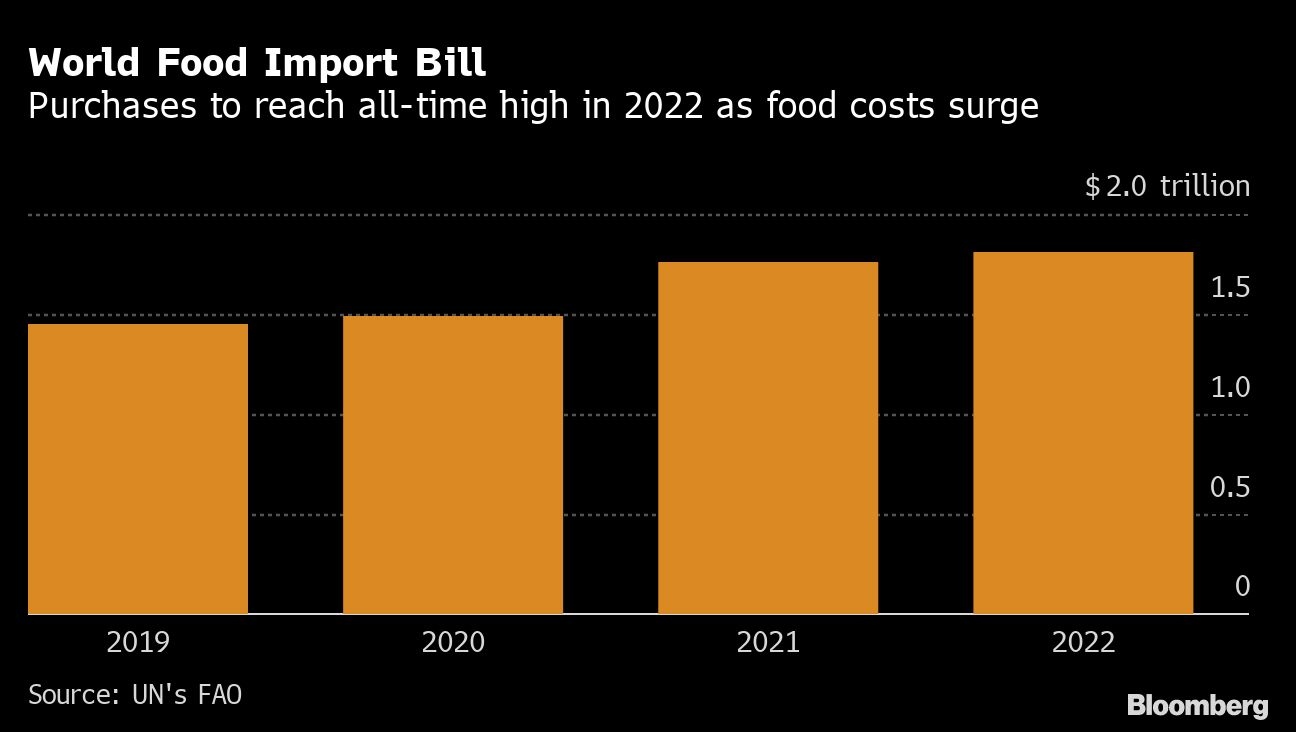Jun 9, 2022
Global food import bill set for record, taking toll on poorest
, Bloomberg News

The global food import bill is set to reach a fresh record in 2022, but surging prices mean buyers will barely be getting any more for the money.
Food imports are expected to total US$1.81 trillion this year, surpassing an all-time high set last year by US$51 billion, the United Nations’ Food and Agriculture Organization said in a report Thursday. Almost all of that is because of inflation, which is worsening a cost-of-living crisis in developed nations and deepening hunger in poorer countries.
An FAO index of food prices surged to a record earlier this year as Russia’s invasion of Ukraine curtails shipments from one of the world’s biggest suppliers of vegetable oils and grains. Soaring energy and fertilizer prices are also making it increasingly expensive to produce crops and livestock. That’s raised concerns about global hunger, and the report shows the spike in food costs is already taking a toll on vulnerable areas.

The report showed a growing schism in the diets of rich and poor nations because of the price surge. Developed countries are still bringing in all varieties of food, while emerging regions are expected to increasingly shirk high-value products like meat, oilseeds and beverages to focus on staples, reducing the diversity and quality of diets, it said.
“These are alarming signs from a food security perspective, indicating that importers will find it difficult to finance rising international costs,” the report said. “The year 2022 may usher in an era of lower resilience to higher food prices, notably by the poorer regions of the developing world.”
The bulk of the almost 3 per cent increase in the global import bill is due to rising costs and not because the world is buying more food, the FAO said. Food purchases by least-developed nations will fall by US$2.4 billion this year, the report showed.


